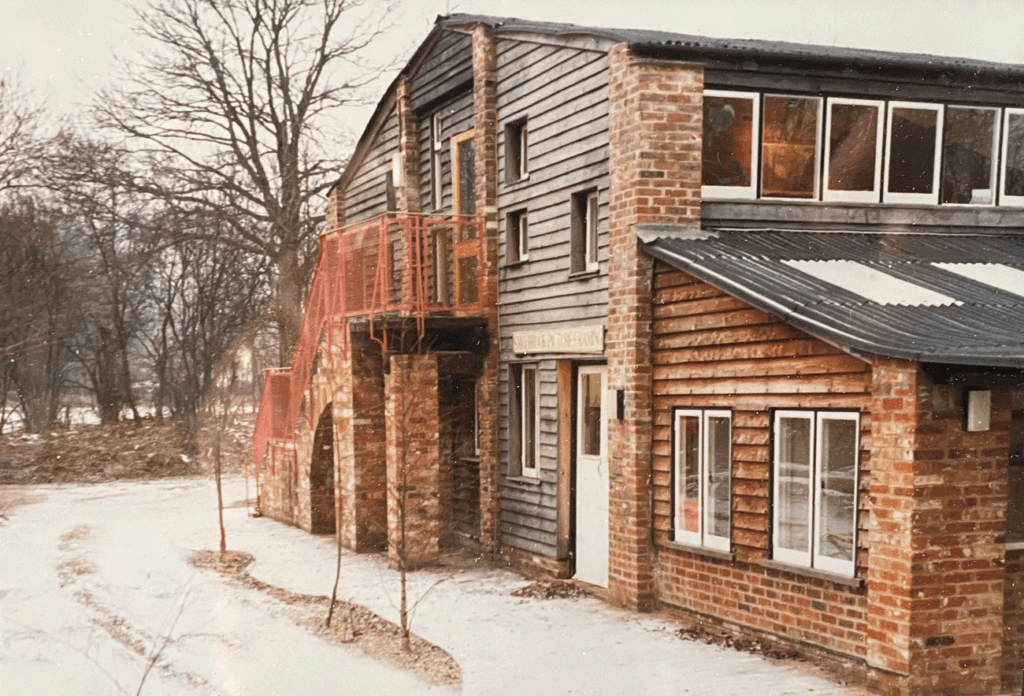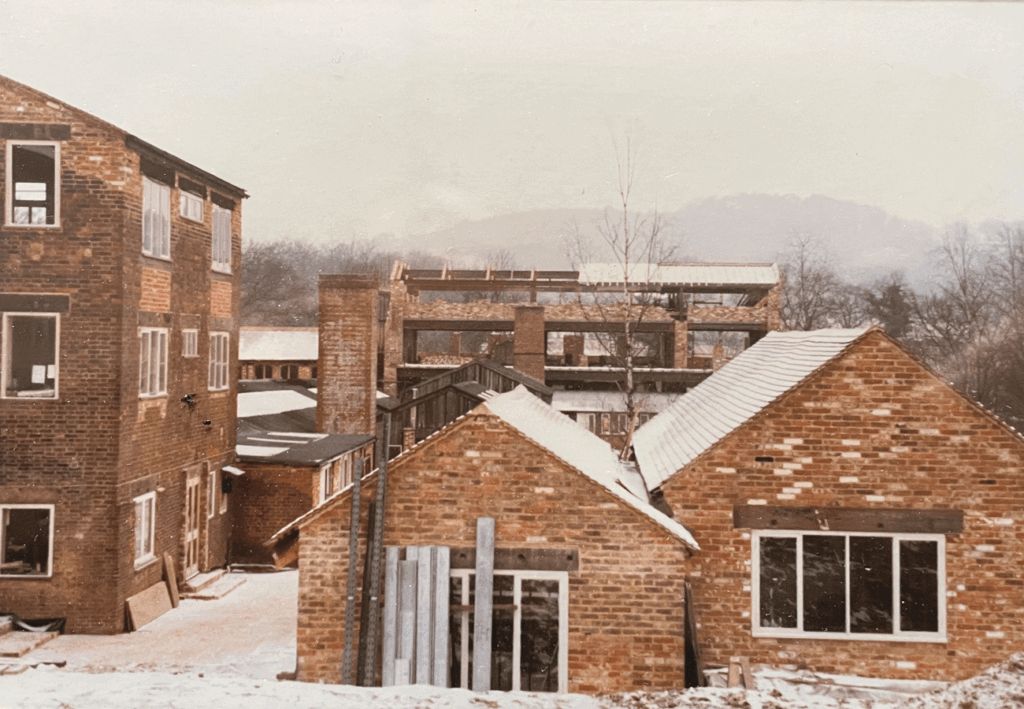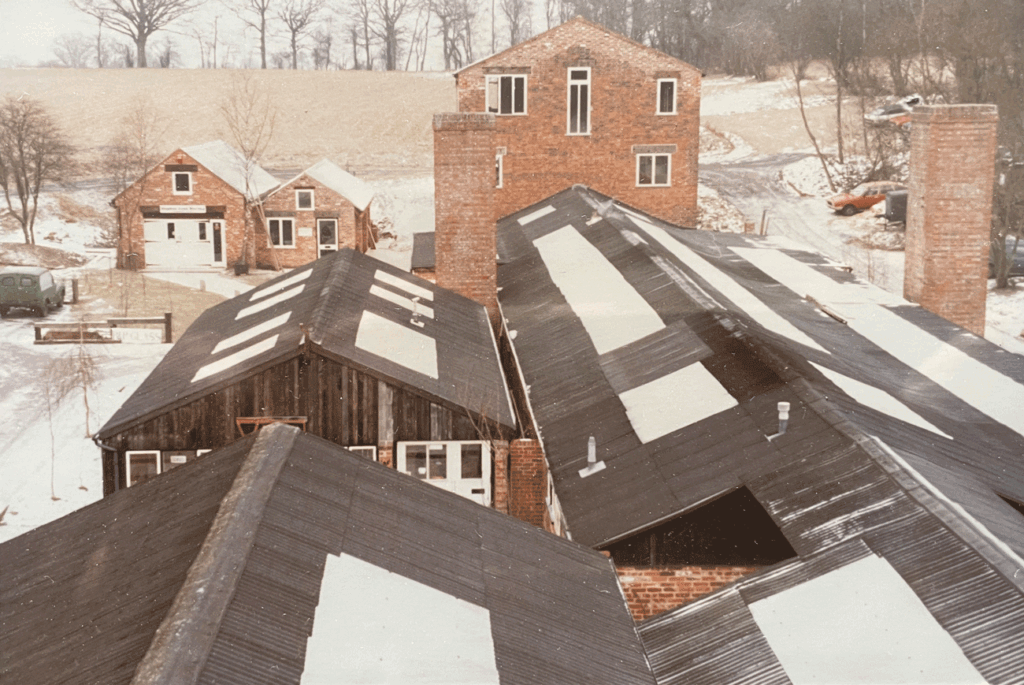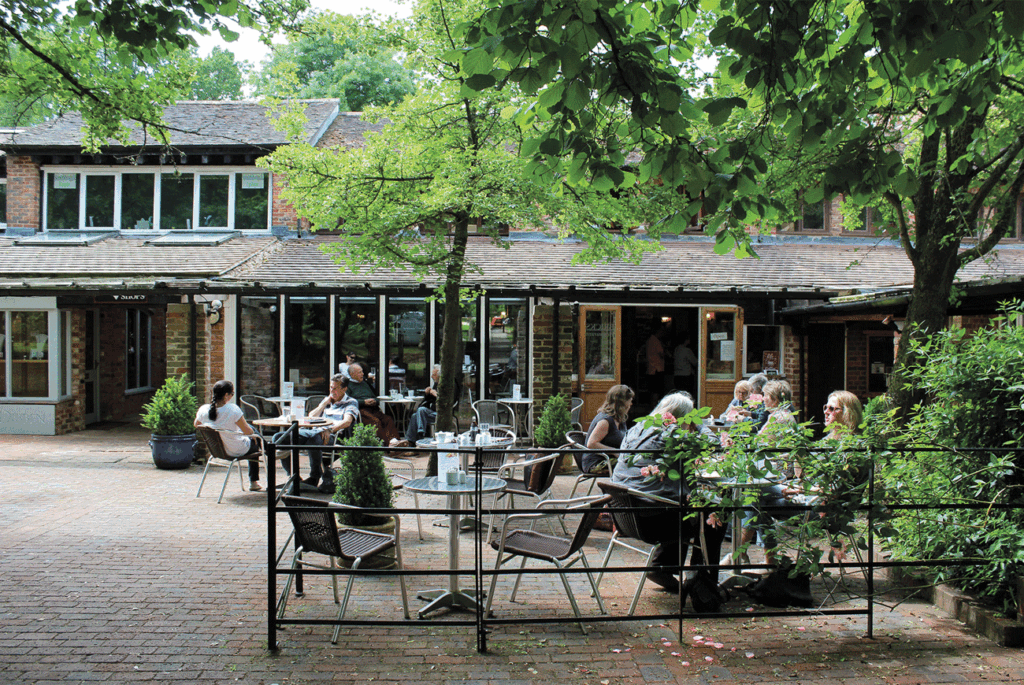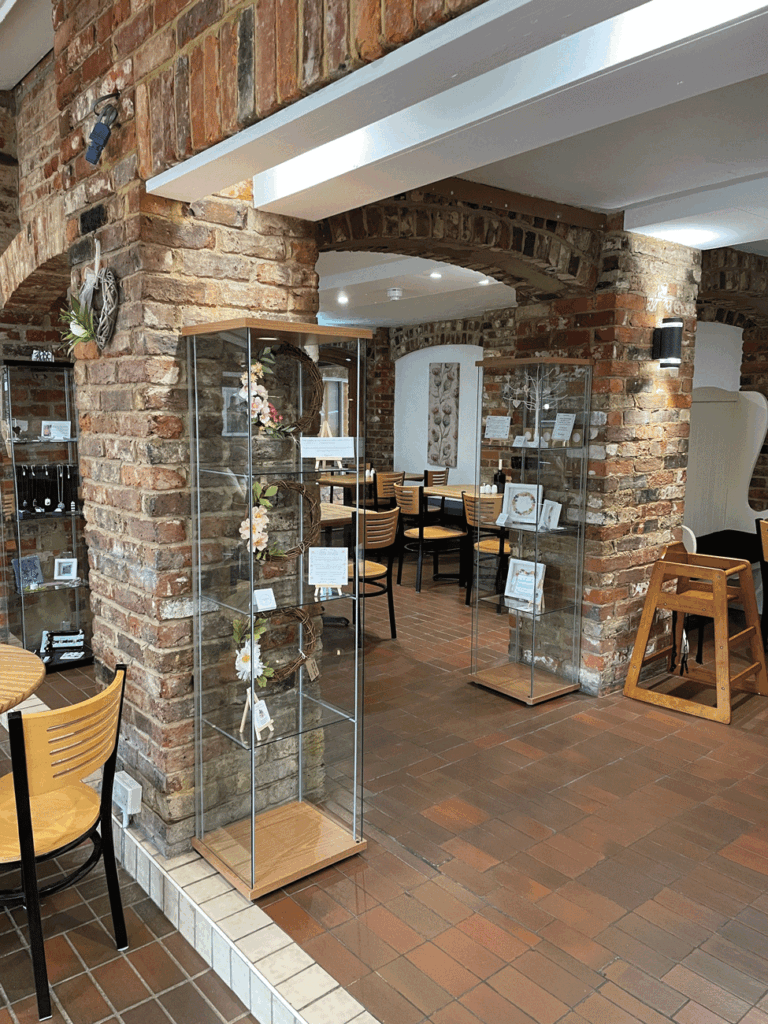
Ordinance Survey records show that brick making was taking place at Smithbrook as early as 1876. Operations were always on a small scale and the clay extraction pit and timber sheds were moved from time to time.
During World War II, some of the buildings stored parts for Mitchell bombers stationed at Dunsfold aerodrome.
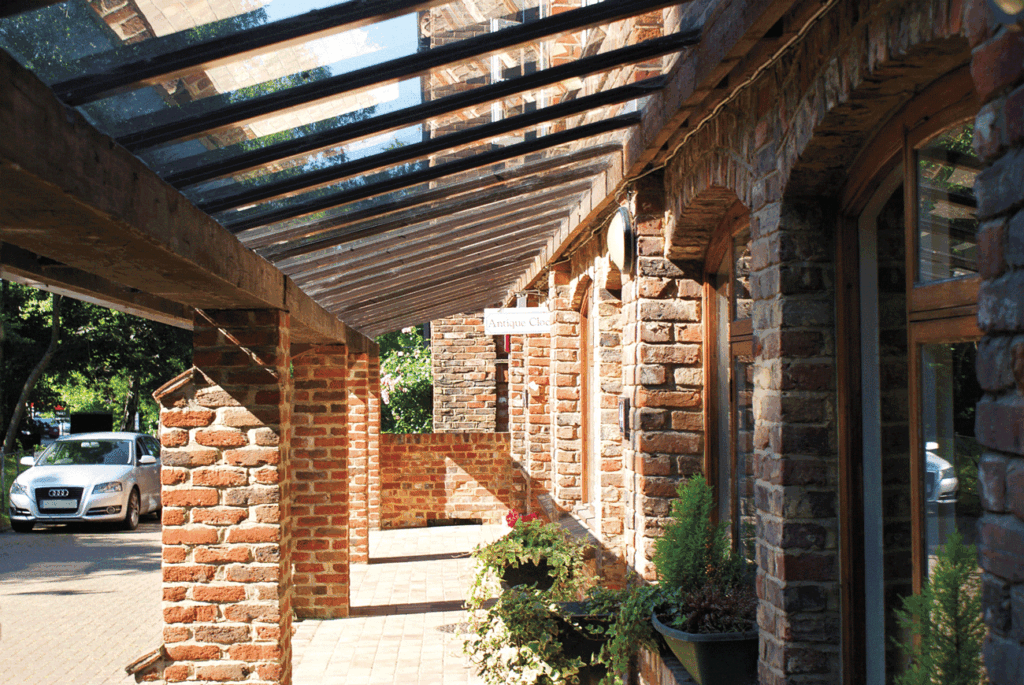
Brickmaking resumed after the war ended but a fire in 1948 destroyed all the buildings. The opportunity was taken to rebuild them with steel frames and brick and timber cladding and operations were updated, oil firing replacing the original fired clamp process. The two main types of brick were ‘red-multi’ and ‘purple-multi’ facing bricks.
In the winter of 1962/3 severe snowfalls caused much of the roofing to cave in. The damage and difficult economic conditions in the building industry, effectively spelt the end of brick production at Smithbrook Kilns.
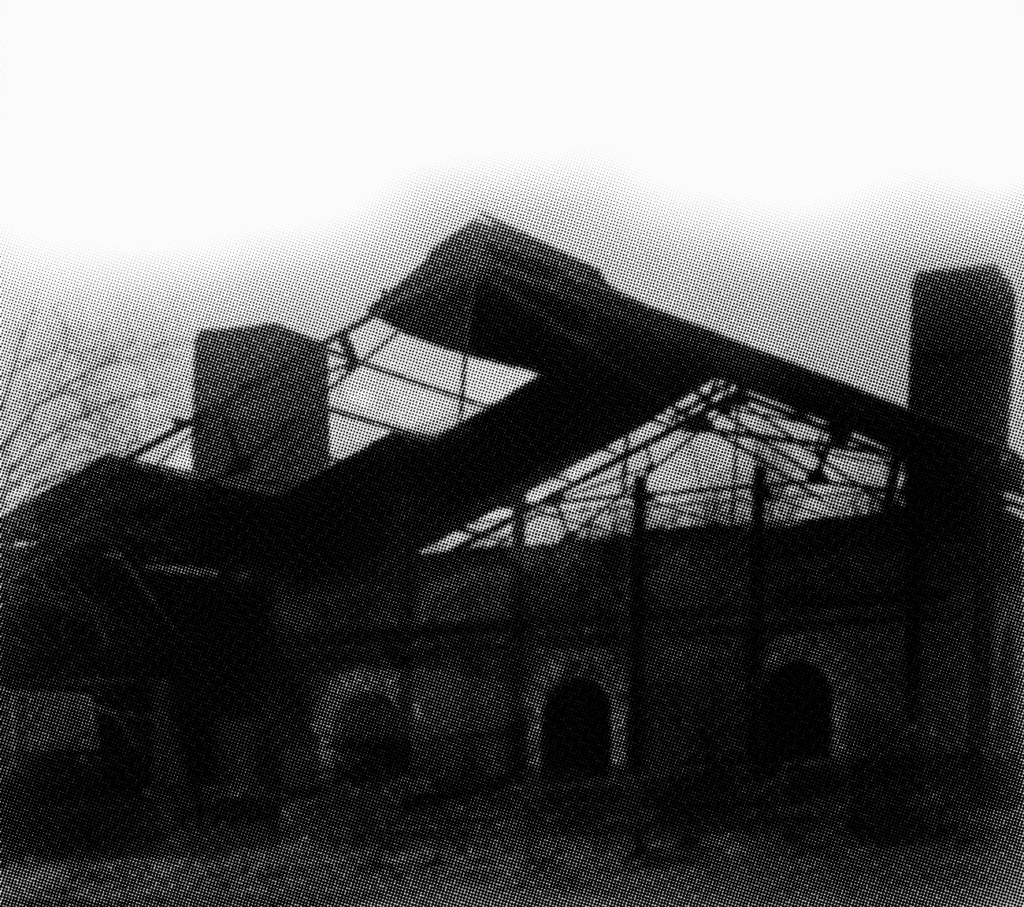
During the next 15 years, the site lay unused. By 1981, when repair work began, almost all of the buildings were in a very poor state. Those that you see today incorporate many of the old bricks and other materials that were on the site.
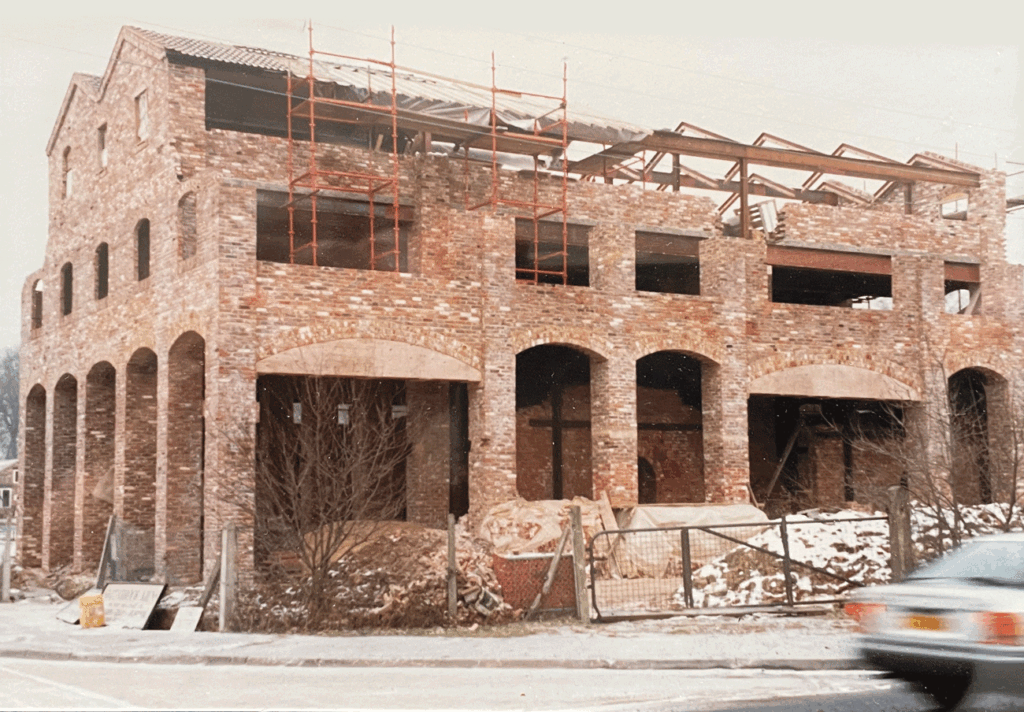
How it came to pass – Management Team
My colleagues and I were working together as architects when we came across Smithbrook Kiln initially about 1976/77. We were in the Cranleigh area and noticed this derelict site. It was a fairly big site with a very battered advertising board and we just made enquiries about buying it out of curiosity. We thought we would like to resurrect the buildings and possibly make a business from inviting other small companies to join us.
It took a long time to get going but finally work commenced in 1981. We began by working on the single story buildings as they were the easiest. It was like a bomb site at first. A lot of the materials on site were removed over time by various people. It was a question of clearing the site and basically using the same format that existed and dividing up the units. Laying the floors, enclosing the walls and endeavouring to make something that was reasonably attractive.
Once the work begun people were drawn in and the enquiries came. Very quickly we found it attracted various tenants, people who were just starting up in business. Quite early on in the project we decided we would like to open a small café/restaurant here, and Bricks opened in 1985. When people visited the café that helped of course, because it grew the foot fall at Smithbrook and publicised what was happening here.
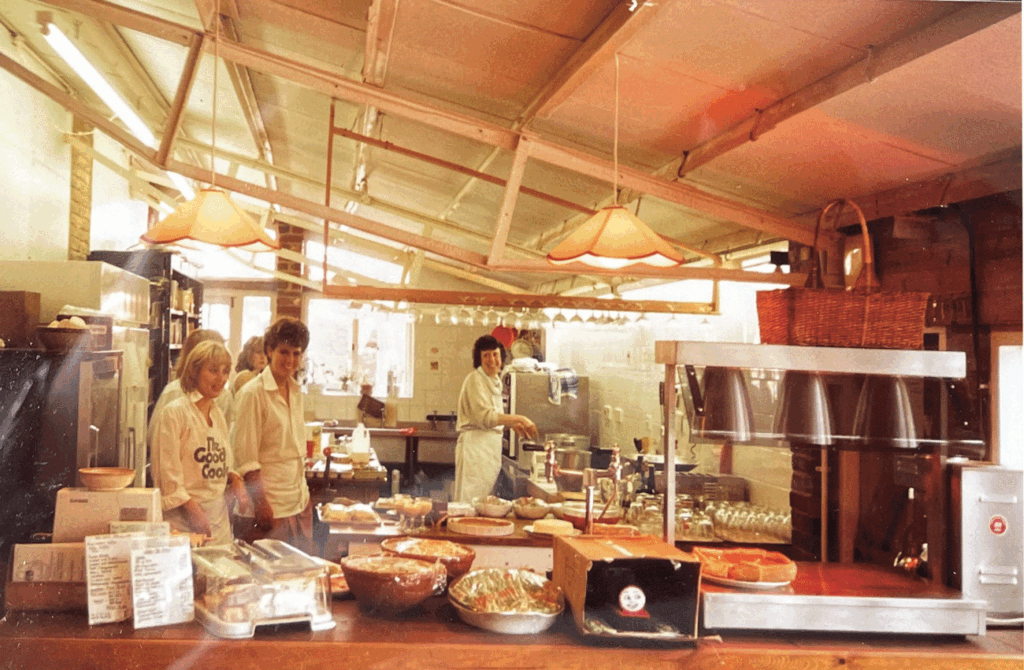
We wanted to foster the nature of the whole site being like a little village and community, like no other. We wanted it to reflect the countryside around so planted all the trees you now see. Beforehand there were very few trees because the land on which the buildings and car park now stand had been stripped of clay in the very early days, with no topsoil ever being replaced. We had to replenish the topsoil sufficiently for the trees to grow.
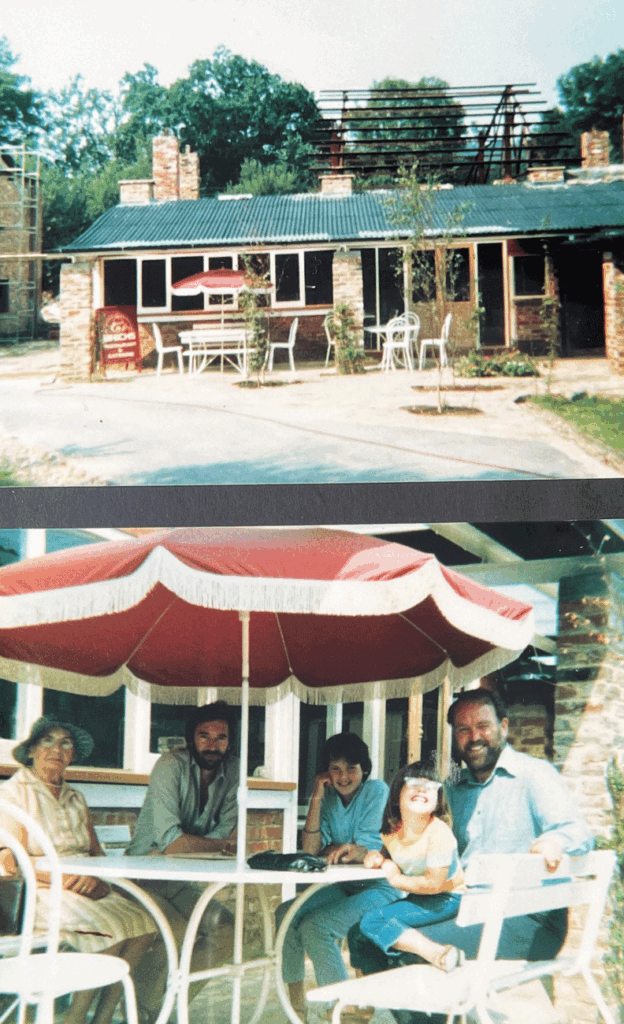
From those initial stages it has developed from there. There are now some 50 companies on site, some of which have been here for over 20 years, a small number for over 30. There are always newcomers changing the nature of business in some units and so Smithbrook Kilns changes all the time. Sometimes businesses expand, sometimes they contract and we’ve tried to accommodate that by either making the buildings a bit bigger or smaller.
From the beginning, we’ve ploughed back money into the site to continue expanding it and attract more people. We have invested considerably in the actual environment. We’ve planted the trees that are here which has attracted more wildlife, a very wide variety, which is something we like and believe is important. Today it’s even more important because of climate change. Last summer for example, when it was very hot, the trees provided cover and therefore large areas were cooler in the shade.
During COVID of course, people had to reset and rethink nature, home, work business didn’t they. There was a decline in business here and a number of businesses struggled but most of them pulled through. The same applied to us as there were no new enquiries during the pandemic but generally they came in again during subsequent years. If anyone is interested in a unit at Smithbrook they can look at our website where there’s photographs and a list of every company here with a brief description of what they do. There’s a diverse selection of businesses on site, from high tech artists to low tech. It’s the variety that is so essential really. We’re not a monoculture of businesses, we’re not like a normal business park. Smithbrook maintains its rural identity and that’s what we want. We’re trying to create a working/living environment where we would like to live and occupy all the time.
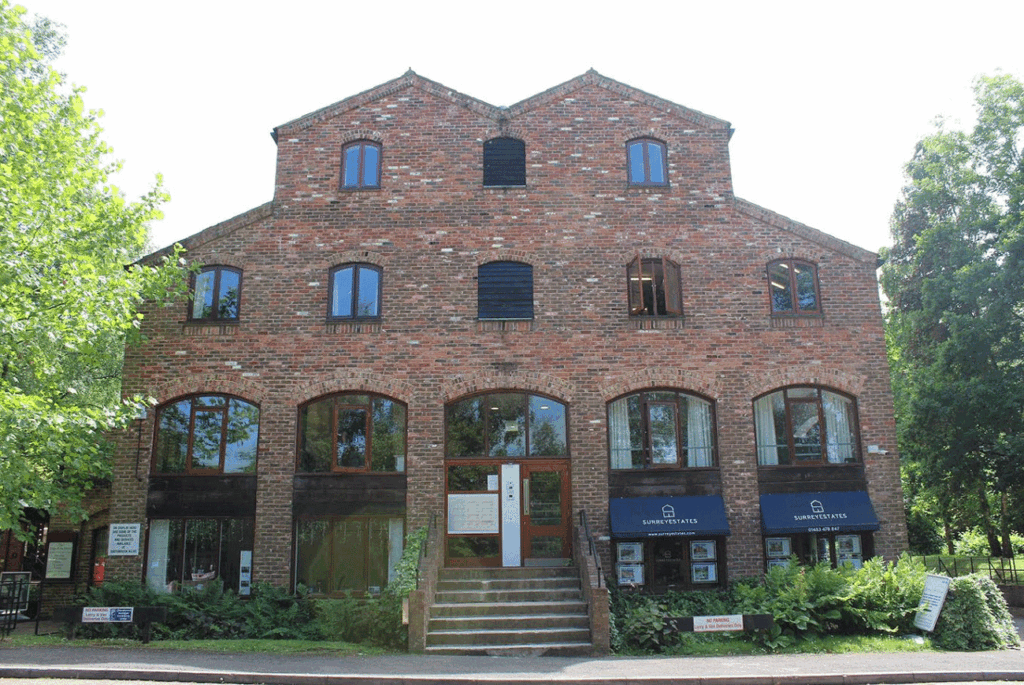
In recent years we’ve incorporated a number of flats into the development because many of the bigger offices no longer had tenants in them which has changed the nature of the site once again. It wasn’t an easy decision to convert some of the buildings into flats but they’re all occupied now which confirms that decision.
To a small business starting up we would encourage them to look at Smithbrook Kiln. It’s artisan, all businesses are welcome here. Come and have a chat which is our normal way of doing business, call 01483 276455 or email . We have the benefit of free parking – no traffic wardens here – as well as the Bricks café/restaurant.

